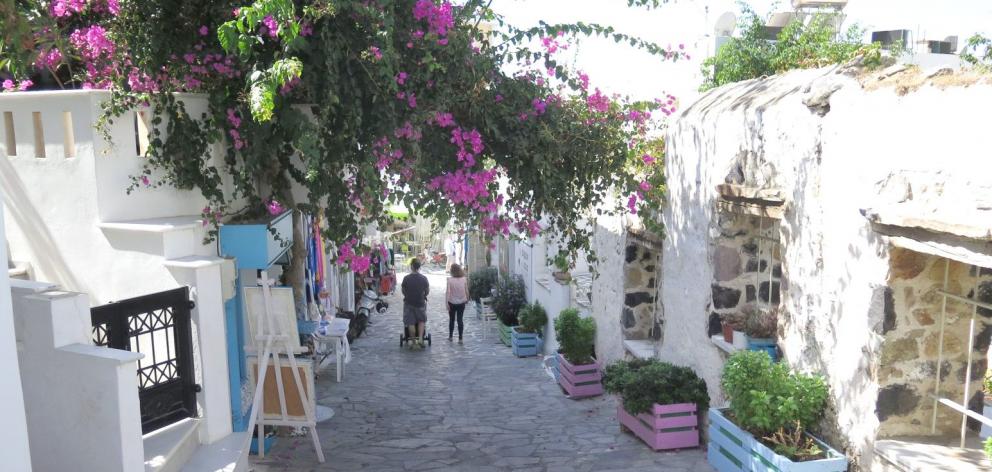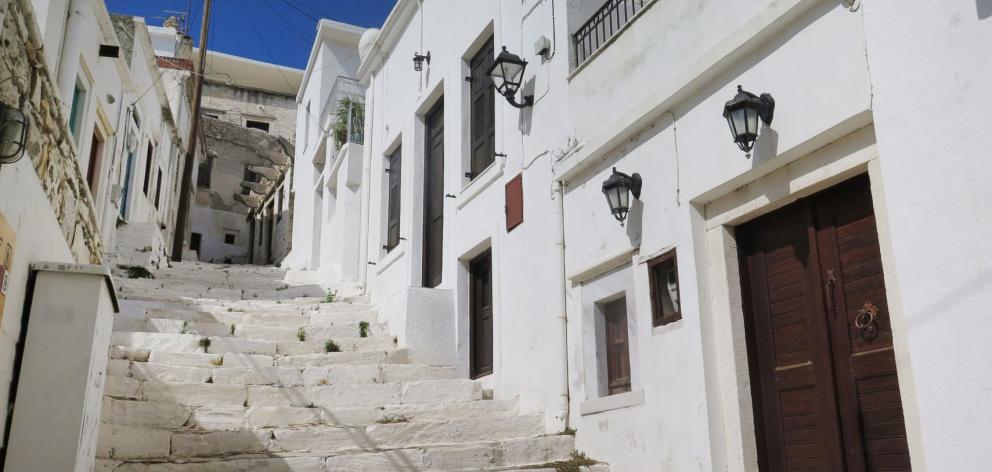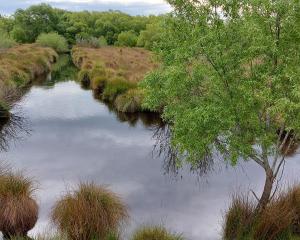
As I sailed into the fertile Cycladic treasure-chest of Naxos, a sense of discovery reached out to greet me.
A towering marble doorway, crowning a rocky outcrop next to the harbour, stood proudly in the skyline. Few islands possess such a stunning archaeological landmark to jolt freshly-arriving ferry passengers from their journey across the sea.
The locals call it the Portara (which means portal), built in 522BC as the doorway to the ancient Temple of Apollo. They say if you stand in the doorway and make a wish, you'll feel the cosmic energy of Apollo weaving its magic to make the wish come true. I'm still waiting.
Adorning a rocky islet in the harbour and connected by a causeway, the temple itself was never finished. Commissioned by the local ruling tyrant Lygdamis, he had grand designs on constructing the most glorious temple in Greece,
but he was overthrown part-way through its construction.
The Venetians loved these Cycladic islands, using them to form a natural bridge in the sea to underpin their trading power.
Naxos Town is a photogenic gem, with a meandering waterfront edged by quintessential whitewashed buildings, while a Venetian hill-top castle, the Kastro, gazes over the village.

The fully restored Glezos Tower is a typical Venetian tower and an appetiser to the multitude of feudal towers that are scattered across the island.
If you like getting lost in a tangle of super-skinny winding lanes, explore the Bourgos district, where the Greeks lived when the Venetians were in power.
Brimming with Lilliputian-sized shops and equally enticing restaurants, there's a dining stand-out - Vassilis, the island's oldest family tavern, handed down from father to son over multiple generations, serving traditional cuisine.
I took in Naxos' sights by joining a cross-island day trip, operated by Naxos Bus Transfers.
As you head out of town, vast flocks of sheep, goats and cattle come into view and behind dry stone walls, there are succulent orchards and market gardens - a reminder that Naxos is one of the few Greek islands that can feed itself. The stone walls prevent erosion, help to retain moisture and keep the soil fertile.
Yes, the rhythms of agrarian life beat strongly here. Naxian potatoes are a massive export-earner commanding premium prices, as do the local spicy cheeses. I had to control myself as we breezed by fresh figs, peaches, melons, grapes, olives and citrus groves, all ripe for the plucking.

Mythology says this is where the Greek God Zeus was raised as a child. If you're feeling extra-adventurous, it's a three-hour lung-buster to scale the summit.
Our first stop was in the lush, green valley of Gyroula Sangri to marvel at the all-marble Temple of Demeter. Constructed 540BC to worship the goddess Demeter (one of the 12 gods of Mt Olympus), she was the protector of vegetation and farmers.
The site was selected because of its fertile soil and the temple pre-dates the Parthenon in Athens by a century.
Across the interior, our group spotted many of the 21 Venetian feudal towers still standing, from where the trading republic's appointed lords lived. The Greeks call them ``piyri'', and in Venetian times, a portion of the local agricultural production was also stored in these towers as a form of tax.
Delving deeper in to the hinterland, the bougainvillea-emblazoned village of Halki is where you'll find the historic Vallindras kitron distillery, which pioneered production of the liqueur in 1896.
Kitron is made from the fruit and leaves of the citron tree - a close cousin of lemons, but stronger in taste. Produced in three different varieties - green, yellow and clear - I had great fun sampling the range for strength and sweetness.
If you're a fan of Italy's limoncello, kitron should hit the spot, albeit somewhat stronger.

Churches speckle the landscape with such abundance, that there's actually one church for every four residents!
The best is the Byzantine church of Drosiani Mary. Originally built in the 4th century as a monastery, and progressively added to over the ages, it is an absolute jewel.
Within the arched exterior, constructed from field stone, the colourful frescoes of biblical scenes and saints were painted on the walls 1500 years ago - it's remarkable they have survived in such a relatively good state.
The more you explore Naxos, the greater you realise how incredibly endowed the island is with marble - 64% of the island's geological structure is marble and it's still heavily exported worldwide.
Naxian marble was hauled to Athens to adorn the roof of the Parthenon, and it's still highly sought after because of its creamy colour and glistening crystal texture, underscoring its technical name, crystallina marble.
The village of Apeiranthos, set on the foothills of Mt Fanari, is a knock-out. It's informally called the Marble Village because the buildings, shops, lanes and steps are all crafted out of the stone.
Originally settled by refugees from Crete a thousand years ago, many of the villagers still wear traditional attire and have their own dialect.

The town itself is dotted with little squares edged in cafes and a tantalising labyrinth of tiny streets and alleyways, deliberately designed to thwart pirates.
Locals were very superstitious in medieval times, so the street corners are also adorned with religious crosses to scare off the devil.
Apeiranthos would have to rate as one of the Aegean's most picturesque and evocative villages.
My final stop was in the beachside village of Apollonas, which is sheltered from the prevailing wind.
What was once a sleepy fishing village has become the picture-perfect beach haunt on Naxos, thanks to its sweeping crescent of golden sand and
whitewashed cubist houses fanning across the slopes above.
Just above Apollonas beach, a 10m-long marble statue, with intricate carvings only half-finished, has been left to linger in this abandoned quarry.
This big boy, chiselled in the 7th century BC, was meant to depict the Greek God Dionysus, but why the quarry was abandoned and the masterpiece left unfinished remains subject to debate.
Some scholars believe it was due to cracking and the inability to transport the statue, but an alternative theory is that the construction was cancelled or the order wasn't paid for, so the sculptors downed tools and walked away.
It's an unresolved mystery for the ages.












